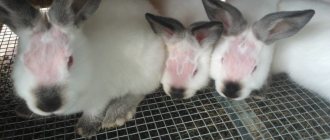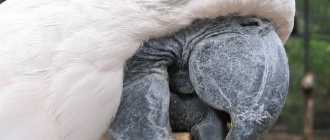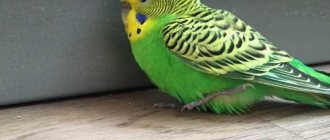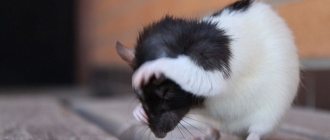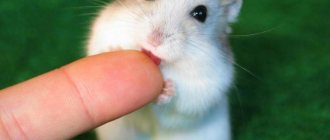- Does your cat lick plastic, bags, or maybe foil?
- He has his reasons for this!
- Some cats love to bite and lick shopping bags and other plastic items - why do they do this?
Some cat behavior is extremely difficult for us to understand. One of them is undoubtedly the strange passion that some pets show for plastic objects.
Foil for shopping, a pen, a laptop case - obsessions can be different. However, when a cat licks plastic, there is no point in looking at it with pity or even getting angry. There are specific reasons why this happens - check it out!
Reasons for cat behavior
Animals lick and chew plastic bags for several reasons:
- they retain the smell of food;
- soft polyethylene alleviates possible toothache or discomfort from inflammatory processes in the oral cavity;
- the material of biodegradable bags contains starch and fat, the taste of which the animal likes;
- the cat is attracted by the rustling sound;
- the animal is stressed or bored.
This is interesting: What breeds of curly-haired cats are there?
Odor storage
And again we return to plastic bags. They are made from a polymer material, the gaseous hydrocarbon ethylene. These bags have the amazing property of absorbing all odors (especially the odors of the contents). For example, you buy food in a supermarket - fish, chicken, meat, etc. All this is wrapped in polyethylene. At the checkout, purchases are packaged in another, “large” branded bag. As you know, cats have a sensitive sense of smell. All the plastic packaging containers managed to become thoroughly saturated with food on the way home from the store. The logical result is the purr’s increased interest in the packages you brought.
Soft polyethylene relieves toothache
Chewing may be a way to relieve pain. If a cat has dental or oral diseases, then it instinctively begins to lick or chew soft plastic bags, trying to get rid of pain.
In addition to dental diseases, other reasons can lead to the desire to “feast” on bags:
- state of stress (change in family composition, renovation, moving to a new place);
- poor nutrition;
- Digestive problems (hairballs stuck in the stomach).
Is there any harm in this?
In all areas, you should not allow your cat to lick the plastic bag, as this may encourage them to chew and swallow pieces of plastic that may result from the activity. Consuming these parts can potentially create an intestinal blockage. Some of the sites cited refer to cases where cats had to have plastic bags removed or plastic pieces were found in litter box feces. Additionally, you may not know the history of the bag; he may have come into contact with a substance that is toxic to cats.
I recommend, if possible, not allowing your cat to continue licking plastic bags.
How to wean a cat from a bad habit
Licking bags is far from a harmless activity for cats. During this process, the animal chews and swallows small pieces, which can lead to intestinal obstruction. You can prevent unpleasant developments in the following ways:
- limit access to cellophane: do not leave food in bags on the floor or table, close the trash can in the kitchen cabinet;
- Check the condition of your pet’s teeth and entire oral cavity with a veterinarian;
- buy toys so that the cat always has the opportunity to occupy himself;
- eliminate factors that cause stress in your cat;
- balance the animal’s nutrition, including all necessary vitamins and microelements in the diet;
- treat your pet with special chewing sticks with mint or matatabi.
Wild animals have access to various plants, with the help of which they normalize digestion and replenish vitamin deficiencies. Therefore, it is advisable for domestic cats to grow special grass in pots or containers. If you don’t have the desire or time to sow greens yourself, you can buy ready-made ones at the pet store.
If all the measures taken do not help wean your cat from the bad habit of licking plastic bags, you should seek help from specialists.
(3 votes, average: 3 out of 5)
How to help a cat with food poisoning at home and in the clinic
Helping your pet with poisoning at home involves accelerating the elimination of toxins from the body, as well as relieving symptoms.
- If an animal is poisoned by an acid, it is necessary to give an alkaline solution as an antidote; for this you can use soda diluted in water. Using egg yolks mixed with plain water is also effective.
- In case of alkali poisoning, the antidote is acid. The most accessible compounds in this group include acetic acid. The ingredient should be mixed with water in a ratio of 2 to 1 and poured into the pet’s mouth using a small syringe without a needle.
- You can induce vomiting at home by administering an aqueous solution of chamomile and potassium permanganate tincture.
- To replenish fluid deficiency and restore water and electrolyte balance, your cat should drink plenty of fluids.
- To reduce the harmful effects of toxic compounds on the cat’s body, it is recommended to give the animal sorbents. This group of products includes activated carbon, Enterosgel, Polysorb.
In a hospital setting, gastric lavage is performed in order to eliminate the effect of the toxin and speed up its elimination from the body. The animal is also prescribed laxatives, sorbents and diuretics. These drugs eliminate intoxication syndrome and remove metabolites.
In case of severe poisoning with poisons that cause damage to the mucous membrane of the gastrointestinal tract, surgical therapy may be prescribed using organ resection or wound suturing.
In case of a snake bite, the doctor administers an antidote that prevents intravascular coagulation.
When the central nervous system is depressed with the development of convulsive syndrome, various anticonvulsants are used.
The cat is attracted by the rustling sound
The cat family has a special relationship with rustling and rustling sounds. This is due to the way they recognize moving objects at the time of danger or hunting. Therefore, the sound of rustling is a strong irritant for the pet. If a domestic cat lacks physical and emotional stress (they are provided by regular adequate games), then it tries to make up for this deficiency by licking bags.
Plastic bags pose a potential risk to the life and health of animals. Pieces of plastic can get into the respiratory tract and cause asphyxia (suffocation) for the cat. Their entry into the digestive system threatens the development of intestinal obstruction, in which emergency surgery will be required to save the life of the pet.
The use of plastic is gradually becoming an atavism for human civilization. In particular, when it comes to plastic packaging for products and more, many people understand the harmfulness of using such packaging. Plastic litters the earth and the world's oceans and slowly decomposes. However, there are more obvious harms to nature that many can see. It's about the nature of your home and the negative impact of plastic packaging on your cats.
Many cat owners know how much their pets love to lick bags, and sometimes chew and swallow. In general, there is little useful in this habit, but there is plenty of harmful. Therefore, you should figure out exactly why this habit occurs and how to wean your pet or domestic cat from licking bags.
When to see a doctor
A cat eats something inedible not always in front of its owner. Therefore, it is impossible to immediately discover what happened. You need to focus on your pet's behavior. Small, delicate things independently leave the body through the gastrointestinal tract. This usually takes up to 3 days. The cats do not show what happened in any way, eat well, and behave actively.
Alarming symptoms:
- increased salivation – due to blockage of the esophagus;
- cough, wheezing, blue tongue - when localized in the pharynx;
- restlessness, neck craning, hunched back;
- abdominal pain, bloating, accumulation of gases;
- lethargy, apathy, weakness, inactivity;
- vomiting with belching, problems with bowel movements;
- lack of appetite, thirst, exhaustion of the body.
The listed signs appear with the development of obstruction and damage to organ walls. If the condition does not return to normal within 3-4 days after the cat ate the money or hair elastic, the veterinarian decides what to do. The owner needs to get the pet to the clinic as quickly as possible.
This is interesting: Why do cats cry?
Let's ask the veterinarian: “My cat ate a thread, what should I do?”
A cat playing with a ball of thread is so cute... But if he does eat some thread (ribbon, dental floss, fishing line, tinsel, etc.), it can cause serious problems.
A little earlier, there was a post about an incident that happened with a dog, which told what stems of grass can do to an animal. It describes in detail what tricks had to be used to extract these same stems from the anus of a galloping dog.
One of the comments under that story caught my attention, because the holidays are coming and there will be many different shiny threads around that will magnetically attract the attention of our little brothers. Here is what one of our readers writes about a similar case when her cat ate a thread: “I had a similar problem, only with a cat that ate the thread
The thread came out of its back and dangled behind my favorite, willy-nilly I had to pull it out.”
Here is what one of our readers writes about a similar case when her cat ate a thread: “I had a similar problem, only with a cat that ate the thread. The thread came out of its back and dangled behind my favorite, willy-nilly I had to pull it out.”
It would be funny if it weren't so sad.
Cats and threads are an epic example of two things that should never cross paths.
And I’m really very glad that everything ended well for our reader’s cat, because it could have been completely different. Still, there is a difference between a few stems of grass, which by definition cannot be longer than a few inches, and an eaten thread of indeterminate length.
The image of a cat playing with a ball is firmly ingrained in our heads, like a cute template. I sometimes wonder how every artist has not captured a similar moment in their paintings.
Did the cat eat the thread? First of all, let's talk about the types of threads
Unfortunately, everything indicates that fur is quite dangerous for cats. Because it's a thread.
This also includes dental floss, fishing line, New Year's rain, Easter grass, ribbons and anything long that is similar to the subject of our conversation.
Such objects, when ingested by cats, can cause serious congestion in the digestive system due to their “long” shape. And this is truly terrible, without exaggeration.
What can happen if a cat eats a thread:
Long (like a thread) objects will cause damage if one of the ends gets caught on something inside the animal. One of the most common places where this can happen is at the base of the tongue, where the thread gets wrapped around and becomes firmly stuck. Even if the cat can swallow it, the skein will turn into a kind of anchor.
And the base of the tongue is far from the only place where a thread can get stuck. There is no need to explain that when any part of a long object gets stuck in any part of the digestive tract, this is a serious danger. The intestines will one way or another try to push everything towards the exit from the body.
But if an object gets caught on something, there is no need to try to pull it out. You will have to give everything stuck a chance to come out naturally, relying on the functionality of the intestines, otherwise there is a possibility of intestinal volvulus.
The newly formed node itself will cause additional pressure on the walls of the intestines, and pressure from foreign objects will also be added, and these are prerequisites for tissue rupture. Any thin, hard objects inside an animal are a source of such consequences. Any problems in the intestines (including the action of bacteria) lead to an imbalance of the entire body, sepsis and death.
What to do if the cat ate the thread:
First of all, we note that in view of all of the above, cats’ access to threads, ribbons and other long things should be strictly prohibited. If the tailed prankster still gets to them... If the thread or other object is not stuck somewhere along the way, he should come out with the chair completely. Let us remember the story of our reader.
After all, in fact, only a small piece of thread could appear outside the cat. And in this case, pulling the thread could lead to dire consequences. If the thread is long enough, attempting to pull it will result in tears or other serious damage to the walls of the intestines and digestive tract. And this can happen throughout the entire passage within the animal.
So if you see a string hanging out of your pet, we highly recommend just cutting it off near the anus. Then you should carefully monitor the cat until all foreign objects leave the animal naturally. If there are any changes in behavior, especially vomiting, loss of appetite or lethargy, contact your doctor immediately.
Dr. Eric Barjas | November 27, 2017
Why do cats like bags?
Cats lick plastic bags for a number of reasons.:
- The simplest option is that a plastic bag retains the smell of the product that was wrapped in it. In the case of meat and dairy products, the increased interest in used packaging on the part of curious pets is easily explained.
- Your cat may have tooth or oral pain. By chewing a soft bag, the pet tries to relieve discomfort.
- Biodegradable bags are made on the basis of starch; animals may be attracted by the smell, although it is imperceptible to humans.
- To prevent the bags from sticking together during storage and transportation, they are treated with so-called “sliding agents.” Typically, it is stearic acid, which is obtained from animal fat. In this case, a curious cat may be attracted by the smell of the bag.
- The structure of the bag is smooth and cool; in the warm season, the animal may simply enjoy lying on such a surface.
- The rustling sound can attract animals, especially kittens.
- Stress can cause your cat to become more interested in bags. If a pet is in an unfavorable environment and does not feel safe, then this may be the impetus for increased interest in cellophane.
- A cat or cat is trying to entertain itself. When a pet is alone for a significant part of the time or left to its own devices, the owners do not pay attention to it and do not play with it, then the animal very quickly finds a way to entertain itself.
Thus, a plastic bag as a toy is not a signal of the onset of pathological processes in the animal’s body, but banal loneliness or curiosity. In rare cases, this may be due to health problems.
Causes for concern
The main danger in a cat's craving for bags is that the animal may inhale a piece of plastic while playing. If a cat has a habit of tearing bags apart, it is better for owners not to leave them within the pet’s reach. It is also worth removing the bags if your cat likes to chew or lick them.
The cat’s habit of hiding in a bag cannot be called harmless, because during the game it can become entangled and suffocate. It is better to offer your pet a regular box for these purposes or purchase a special gaming complex.
"Play with me"
During their games, cats simply love to lick each other. By this, among other things, they say that they do not hold any stones to their hearts and completely trust their partner.
The exact same motivation drives our pets when they start licking a person.
If your cat licks your fingers, looks sweetly into your eyes and literally trembles with impatience, then most likely she expects reciprocity from you, wants you to play with him.
However, we humans do not often pay enough attention to our little ones and do not share their interests, in which case licking hands is the only thing left for the cat.
What to do if your cat plays with toilet paper
In this case, you can simply hang the roll higher or so that the paper does not hang down. If the cat has learned to rotate the roll, it is better to cover it with a special lid. You can also wean your cat off this fun by placing a small container of water or a tin with coins in it on a roll of paper.
Preventive measures
If a kitten or cat appears in your house, then you need to know what to do so that it does not eat the fish along with the cellophane.
- Do not throw away the skins of sausages, sausages, bags in which fish or meat was stored in places accessible to the cat. Keep trash bags out of your cat's reach. To prevent your cat from eating the skin of a hot dog or sausage, throw it away in a special bag that will be stored in an inaccessible place. Store used cat food bags there too;
- If there is a Christmas tree in the room, keep an eye on your pet. To prevent the kitten from eating the rain and tinsel, hang it high from the floor, do not let him play with it;
- Remove ribbons and threads, especially knitting ones, so that the cat does not eat them, especially if the day before you noticed that he ate a rag or paper;
- Do not allow the cat to eat a bag that smells of valerian, or blisters for sedatives that contain this herb. Cats often lick things that have come into contact with valerian and can swallow them.
Remember that your pet's health is in your hands. And his well-being, and in some cases his life, will depend on your vigilance and attentiveness.
Source
Absolutely forbidden!
If you notice that a cat has swallowed polyethylene, then under no circumstances should you help him get rid of it. You should not give your animal drugs that cause vomiting or laxatives; the notorious Vaseline oil for cats is also highly taboo! This can significantly aggravate the situation and harm the cat. If you deliberately induce vomiting in a cat, there is a high probability of the bag getting stuck in the throat and, as a result, suffocation of the animal.
All laxatives and oils are dangerous because in case of intestinal obstruction, under their influence the intestines will become even more clogged and the pet’s condition will worsen. Self-therapy and attempts to alleviate the cat’s condition with intuitively selected medications, in many cases, end in an emergency visit to the veterinary clinic and the possibility of surgery.
If you are one of the lucky ones and everything is fine with the cat after such a feast, you shouldn’t rejoice ahead of time either. There is a possibility that when trying to go to the toilet, the animal may get this same polyethylene stuck in its anus. Under such circumstances, you should also not “help” the cat on your own. You should not try to pull on a piece of the bag that is visible to you; you can damage the mucous membrane and gastrointestinal tract of your pet. It is better to contact a specialist who, using special devices, will painlessly and quickly remove the foreign body from the rectum.
Signs of a foreign body in the intestines
Cats eat rain very often. If your cat feels well, eats, plays, sleeps, there is no reason to worry. And if the animal’s behavior has changed, you need to be careful. A few days after the thread enters the digestive tract, severe complications may develop in the form of acute intestinal obstruction. The main symptoms will be:
- depressed state, the animal hides in the corners,
- refusal of food,
- the cat starts vomiting some time after eating,
- absence or small amount of feces excreted,
- abdominal pain when trying to touch,
- increase in body temperature to 40 degrees and above,
- pet weight loss, dehydration.
Rain can wrap around the tongue, causing necrosis.
Signs:
- profuse salivation, admixture of pus, blood,
- putrid odor from the mouth,
- tearing lips with paws, attempts to free oneself from a stuck object,
- slurping movements of the jaws.
It happened, with a favorable outcome, that the rain, having entered the intestines, moving along it, safely came out through the anus naturally. This is if there was less foreign material than the rest of the food. More often, tinsel or serpentine is strung like an accordion, and a thin aluminum thread can cut the insides, causing them to perforate. Body temperature drops to critical levels - below 37°C. The animal dies a few days later from suppuration of the peritoneum.
What to do if your cat ate the rain or stuffed himself with Christmas tree decorations? It is necessary to take emergency measures, try to induce a gag reflex. To do this, prepare a water-salt solution and seal off your furry friend with a syringe. If a lot of time has passed, you can pour about 2 ml of Vaseline or castor oil into the cat, which will help the foreign body pass through the intestines. It is likely that thin threads will not even damage its walls.
It happens that a piece of rain sticks out from under a cat’s tail. If a cat has swallowed New Year's rain, trying to pull it out of the mouth or anus on its own is strictly prohibited. The thread may be too long, twist, or cut the esophagus, stomach, or intestines. Esophageal injuries are much more difficult to operate than intestinal injuries, and healing is poor. It’s better to cut off the visible part as short as possible and wait for the next exit until the rain comes out completely. Sometimes you have to do several “haircuts” until the tinsel is completely in the tray.
If there is no result, if the decoration does not come out the next day, urgently take the animal to the veterinarian. The stuck object will have to be removed surgically. As a rule, an x-ray is taken first. A positive aspect of the diagnosis is good visibility of metallic tinsel in the images. The doctor will assess the pet's condition. Before visiting the clinic, be sure to inquire about the availability of an operating surgeon. If there is a threat to health, surgery is performed. Often in this way it is possible to save a family friend. The cost of the surgical operation is high, about 15,000 rubles, not everyone can afford this. Recovery, rehabilitation are complex, often fluffy beauties die in the postoperative period if the intestines were severely cut by sharp threads.
What will the doctor advise?
Even an ordinary Christmas tree ribbon can be deadly for a cat who decides to play with it. The material from which it is made may be more dangerous than polyethylene and cause severe intestinal obstruction, but the most dangerous are considered to be Christmas tree rain, ribbons for Christmas decorations, foil or rough paper. Therefore, for safety reasons, do not leave your cat unattended where there is a Christmas tree or bags of food or leftover food. If the cat has eaten cellophane, do not try to remove it completely, as this may damage the esophagus or a piece of cellophane will get stuck in the throat and may cause suffocation. You should not give a laxative, as it will worsen the effect; consult a veterinarian.
After examining the cat, he will prescribe an ultrasound and x-ray. These studies will help determine the localization of polyethylene and the general condition of the cat’s body. In some cases, a study with a contrast agent is required. If the animal has a severe case and necrosis of intestinal tissue has begun, surgical intervention will be required. If there are underlying medical conditions or if the cat is over 7 years old, this can be very risky, so it is worth preparing for any outcome. If the x-ray does not confirm intestinal obstruction, and the foreign body does not injure the internal organs, the doctor will most likely prescribe a diet. The cellophane will come out along with the stool.
If the package is stuck in the intestines, a rich and dense diet is required. Under no circumstances should you try to interfere with this process on your own, especially if the cat has eaten a large piece of a plastic bag. In this situation, it is better to contact a veterinarian. Even if a string is stuck in your cat's intestines, do not remove it as it may damage the intestines. It can pass out of the cat’s body with feces on its own, or this will require the intervention of a specialist.
Should I worry?
From time to time, cats may eat sausage rinds, Christmas tree decorations, or bags containing meat or fish products. If the piece of polyethylene is small, then there is nothing wrong with that. It leaves the body on day 3-4 along with feces, without causing significant harm to the animal. Under natural conditions, cats can eat non-food fibers, which they use to cleanse their stomachs, so it is not surprising that they chew rags, bags and inedible things. Veterinarians advise that if cats start eating bags, bring them grass that has not been treated with chemicals, soft chicken bones or special solid food for animals, which is best selected together with a veterinarian.
© shutterstock
Even if a cat, like a dog, eats a large inedible object, it will vomit it. It will not penetrate the intestines and will help the animal cleanse its stomach. It is worth observing the behavior of the animal for 3-4 days. If it hasn't changed, there's nothing to worry about. But if after consuming the package you notice the following symptoms, you should immediately contact the clinic, even if the cat ate a small piece of cellophane :
- restless meowing, excitement. The cat begins to fuss and bother the owners, which has not been observed before;
- constipation, the cat cannot go to the toilet;
- The belly is enlarged, but the cat won’t let me touch it. In some cases, the animal begins to constantly lick its belly or roll on the floor;
- persistent vomiting and lack of appetite;
- constant diarrhea;
- lethargy, apathy and refusal to eat.
Even if the cat ate a small piece, the symptoms described above may indicate intestinal obstruction or a foreign object in the body that requires urgent intervention from a specialist. If no measures are taken, the animal may die. Therefore, at home it is dangerous to give a cat a laxative or try to induce vomiting. A cat can eat a plastic bag along with its contents. In this situation, the likelihood of intestinal obstruction is reduced, but rough parts from the food bag can injure the intestines and cause alarming symptoms.
How it can be used
Confined space forces a cat to adopt a posture that helps keep it warm
The pet's attachment to boxes and packages can be used to transport a naughty pet to the required place or to fix the purr during weighing if the animal does not want to get on the scales on its own.
So, a cardboard shelter for a cat is not only a place of leisure, but also a way to convey your wishes to a person. Therefore, you should not be angry if your furry pet chose this particular object for his games.
Instincts and habits
Wild cats sleep in depressions but prefer open areas. The reason is the survival instinct; the tailed animal must always be able to stand up quickly, fight or run. Most likely, you have seen films about lions. The male, the leader of the pack, sleeps on a hill, which allows him to protect not only himself, but also the lionesses. The conclusion is obvious, cats do not tend to hide while sleeping.
There are also several species of small wild cats that live in burrows. This is explained by the habitat, since larger predators live around the tailed animals. Otherwise, the need to hide during sleep appears only when the animal is vulnerable. Transferring these natural laws to pets, we can conclude that if a sick or pregnant cat climbs under the blanket, this is absolutely normal.
There is no need to worry if your pet has been accustomed to sleep in comfortable places since childhood. Some pets like to burrow into their owner's things or crawl under the covers just because it's softer and more comfortable. For many pets, the need to sleep covered comes out of nowhere; the cat tries it once and understands that it feels good. Further, this habit takes root and becomes part of the normal daily routine.
What do you like about boxes?
In the eyes of a cat, a cardboard box can become a refuge or an object for play. Often cat owners use this packaging to create large play complexes. However, the cat does not necessarily need the box to be lined with warm material. If she likes it, it will be her favorite subject, taking up a lot of her free time.
The smell of childhood
Some believe that the reason for the interest may lie in the relationship between cardboard and wood. It is likely that the cat smells the native smell of wild nature. However, a more plausible version is her childhood memory: as a kitten, she was with her mother in a cozy box. And therefore he can remember the smell.
Cats and boxes
Scientists say the boxes are cats' connection to wildlife. Also, according to research by the National Research Council, it has been found that cats are comfortable in rooms with a temperature of 30-36 degrees Celsius. This is not surprising since cats are believed to have come from the desert. For the same reason, they are able to get by with a small amount of liquid. Cats are very heat-loving pets and love to lie on radiators and sunny window sills, and boxes do a good job of thermal insulation.
Habit from childhood
Boxes are remembered by cats from a very early age. The mother cat feeds her kittens there, they sleep and play, and this habit remains throughout the cat's life. It becomes for them a protective home from stress and danger, for quiet sleep and playful pastime.
The sheathing itself or the arrangement of the cardboard house does not interest cats; they do not need anything extra inside it. They like the box they chose. Cats have a good memory, so they often climb into a cardboard house and begin to purr and move their paws. They remembered perfectly how they kneaded the mother cat’s tummy while playing or feeding.
Hide and seek games
All cats and kittens are very playful at any age. They like to sit in a quiet place, where they won’t be noticed, and track down balls, strings, and bows. The box is also a game object for them, in which it is very convenient to hide and then attack everything that moves.
Cats are very happy when new boxes appear in the house, and if there are several animals in the house, then there is twice as much entertainment. The pet will refuse any toys if there are at least some boxes in the house. With their help, he entertains himself by tumbling, jumping and jumping, gnawing pieces of cardboard, playing with it. A cat can chew holes in a box and then watch with curiosity what is happening around it. They are able to entertain themselves for a long time, and watching the pranks is a real pleasure for the owner.
Very often, cardboard structures serve as scratching posts for pets. They love to tear off the paper and watch this process, then a hole is formed, into which they look very curiously, thereby tearing the box even more and playing in it. In this way, they rip off unnecessary covers from their claws and relieve accumulated stress. Cats love rustling and unusual sounds, which they themselves reproduce. Also, cardboard structures will help to wean the cat from sharpening its claws in the wrong places.
Personal territory
A personal cardboard house is a great joy for purrs:
- There the cat rests, sleeps, watches those around him, and can hide if something worries or frightens him. This is a refuge from guests whom the animal does not know or does not want to be friendly to; from small noisy children who constantly squeeze animals. Domestic cats love peace and quiet.
- When a cat has the opportunity to hide somewhere, it helps to avoid unnecessary stress. If the house does not have a specific house or bed for the animal, but there are boxes, the pet will choose a shelter to his liking and taste, in which it will be convenient for him to hide and play. If the cardboard house still has a tasty smell, then the cat will be able to chew it lightly and make additional exits to play when he is in a good mood.
- In the cardboard house he is comfortable, warm, and there is his smell. It would not be surprising if the cat spends most of his time there, and not in the arms of the owner. If a cat has been in a cardboard shelter at least once, he will constantly come there.
Feeling safe
For a cat, a cardboard house is his personal space, which should not be broken into. With frequent visits to the box, the cat becomes more and more accustomed to it and other places besides it are no longer interesting to him.
The protective instinct is ingrained in animals from childhood, so it is very important for them to have a place in the house where they can hide. Protection and peace of mind is an important factor in a pet’s life, which worries them greatly
Having their own shelter, pets can easily make contact with a person than those who do not have their own house and the ability to hide when they do not want to communicate. The same behavior can be observed when the cat is in its bed. Having their favorite place, cats feel liberated, protected and happy.
Why do they chew packages?
Plastic packaging attracts pets no less than cardboard packaging. There are times when a pet furiously tears a plastic bag with its teeth. This does not mean that he lacks any substances or is sick. Not at all: if you are sick, have a vitamin deficiency or feel unwell, the cat is not interested in the bag. The animal entertains itself this way, because, you see, the owner often pays too little attention to it.
The cat begins its play by rustling and often by tossing a package. While entertaining herself, she may give in to her predatory instincts, similar to those when she plays with a mouse. Other individuals like the way their claws dig into the polyethylene. If the cat seriously chews or even eats the bag, most likely there was something edible in it, which left an attractive smell for it. For the same reason, the cat licks bags.
World Exploration
One of the simplest and at the same time quite easily explainable theories. According to her, licking plastic benefits four of a cat's five senses.
First of all, the sense of smell and taste buds are tested - not entirely obvious sources of information. Cats taste and smell different bags. Plastic, unlike other materials, can retain the smell of other materials and food for a long time, which also attracts furry pets.


